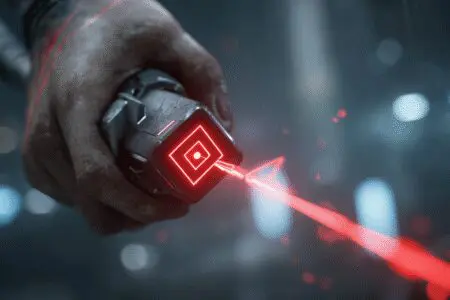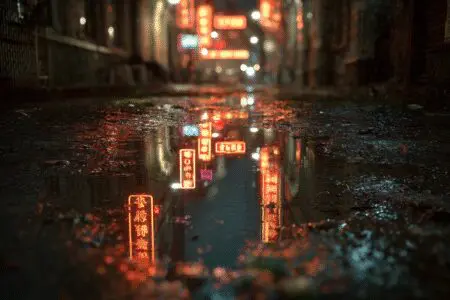Have you ever squinted your eyes while looking at a bright light and noticed that soft, fuzzy halo around it? Or maybe you’ve been exploring a dark cave in a game, and the sunlight pouring through a crack in the ceiling seems to bleed into the darkness, creating a beautiful, ethereal glow. That, my friend, is the magic of bloom. If you’ve ever wondered what is bloom in games, you’ve come to the right place. It’s one of the most common graphical effects in modern video games, yet it’s often misunderstood.
Bloom is a computer graphics effect used to reproduce an imaging artifact of real-world cameras. Essentially, it’s the effect that makes very bright objects in a scene appear to glow, leaking their light into the surrounding areas. Think of a neon sign at night, the searing hot core of an explosion, or a character casting a powerful magic spell. The bloom effect takes these intensely bright spots and makes them feel more vibrant and realistic by creating a soft, feathered fringe of light around them. It’s a subtle touch that can dramatically change the mood and atmosphere of a game.
More in Graphics Optimization Category
What Is Ray Tracing in NVIDIA GPUs
How to Update AMD Radeon Drivers
How Does the Bloom Effect Actually Work in Video Games?
So, how do developers get that glowy look? It’s a clever post-processing trick. Imagine the game’s engine renders a scene as a picture. After that picture is taken, but before it shows up on your screen, it goes through a few extra steps.
First, the engine looks at the image and identifies all the parts that are brighter than a certain level, or threshold. It basically says, “Okay, that sun, those headlights, and that magical sword are way brighter than everything else.” It then creates a new, separate image containing only these super-bright spots.
Next, this new image of bright spots is heavily blurred. This blurring process is what creates the soft, hazy glow. The more it’s blurred, the wider and softer the halo of light becomes. Finally, this blurred, glowing image is added back on top of the original scene. The result is that the brightest parts of the world now have a beautiful, soft aura that spills into the darker areas around them, mimicking the way our eyes or a camera lens would perceive that intense light. It’s a surprisingly straightforward process that adds a massive amount of visual flair.
Is Bloom the Same as Lens Flare?
This is a question I see pop up all the time, and it’s an easy mistake to make. While they both deal with how bright lights are rendered, bloom and lens flare are two totally different effects. I remember playing a sci-fi shooter a few years back and constantly being blinded by what I thought was bloom. It wasn’t until I went into the settings that I saw separate toggles for both.
- Bloom is the soft, fuzzy halo or glow that surrounds a bright light source. It simulates light scattering within your eye or a camera, making the light source feel more intense.
- Lens Flare is the series of bright circles, starbursts, or geometric shapes that appear in a line when you look at a very bright light. This effect specifically mimics the reflections happening inside a camera’s lens assembly.
So, to put it simply: bloom is the glow, and lens flare is the set of artifacts that look like they’re on a camera lens. Many games use both together to create a more cinematic and immersive experience.
Why Do Game Developers Use Bloom Lighting?
Developers don’t just throw bloom into a game to make it look shiny. It’s a powerful artistic tool used to shape the player’s experience and enhance the game’s world. When used correctly, it can completely transform the feeling of a scene. I’ve walked into game areas that felt drab and lifeless, but with the right lighting and a touch of bloom, they suddenly felt magical and alive.
One of the main reasons is to control the mood and atmosphere. A soft, heavy bloom can make a scene feel dreamy, heavenly, or nostalgic. For instance, in a fantasy game, the light filtering through the leaves of an ancient forest might have a strong bloom effect to give it an enchanted, ethereal quality. On the other hand, a sharp, intense bloom on neon signs and futuristic technology can help build a gritty, cyberpunk atmosphere. It helps sell the fantasy.
Furthermore, it adds a sense of realism and visual depth. Our eyes don’t perceive the world with perfectly sharp edges, especially around bright lights. Bloom helps simulate this natural imperfection. This makes the lighting feel more believable and dynamic. Consequently, the game world feels less like a sterile computer generation and more like a living, breathing place. It’s also a great way to guide the player’s attention. A glowing doorway, a shimmering piece of loot, or a critical objective can be made to stand out from the background using a subtle bloom effect, naturally drawing your eyes toward it.
What’s the Relationship Between Bloom and HDR (High Dynamic Range)?
You’ll often see bloom and HDR mentioned in the same breath, and for good reason—they are a match made in graphics heaven. High Dynamic Range, or HDR, is a technology that allows your display to show a much wider and more detailed range of colors and, more importantly, brightness levels. A standard display can only get so bright and so dark. In contrast, an HDR display can show incredibly bright highlights right next to deep, inky blacks, much closer to what the human eye can see.
This is where bloom comes into its own. With HDR, a game can render light sources that are truly, intensely bright—far brighter than the “white” of a standard display. When the bloom effect is applied to these HDR light sources, the result is stunningly realistic. The glow feels like it has real energy and intensity.
I remember getting my first HDR TV and firing up a game that supported it. The difference was night and day. The sun didn’t just look like a white circle in the sky; it was a blindingly bright object whose light realistically bled over the edges of buildings. Explosions weren’t just orange fireballs; they were searing hot events that washed out the screen with a powerful, blooming light. HDR provides the data for “how bright” something truly is, and bloom is the effect that translates that data into the beautiful, glowing result you see.
Can Too Much Bloom Be a Bad Thing in Games?
Oh, absolutely. Like any good thing, it’s all about moderation. There was a period in the mid-to-late 2000s, especially during the Xbox 360 and PlayStation 3 era, when developers got a little… overenthusiastic with bloom. It was a new toy, and everyone wanted to show it off. The result was that many games were slathered in so much bloom that it felt like you were playing the game with Vaseline smeared on your screen.
When overused, bloom can completely crush the detail in a scene. Bright areas become indistinct white blobs, and the subtle textures on surfaces get washed out. I’ve played games where I had to turn bloom off entirely because looking at a bright sky was like staring into a floodlight. It can make it difficult to see what you’re doing, especially in fast-paced games where spotting enemies is crucial.
Moreover, excessive bloom can cause significant eye strain. A screen that is constantly filled with overly bright, hazy light can be fatiguing to look at for long periods. Thankfully, developers have become much more sophisticated in their use of bloom. Modern games tend to use it more subtly, applying it in ways that enhance the art style without overwhelming the player’s vision. And, of course, they almost always give us the option to tone it down or turn it off completely in the graphics settings.
How Do You Find the Perfect Bloom Setting?
Finding your personal sweet spot for bloom is a matter of taste. There’s no right or wrong answer; it’s all about what looks and feels best to you. My first step in any new PC game is to spend a good ten minutes in the graphics menu, and bloom is always one of the settings I experiment with.
Here’s a simple process you can follow:
- Find a good test scene: Load up a level that has a good mix of bright light sources and dark areas. A scene with a sunrise/sunset, a room with bright windows, or a city at night are all great options.
- Start with the default: See how the game looks with the bloom setting the developers intended. Play around for a few minutes to get a feel for it.
- Toggle it on and off: The easiest way to see what an effect does is to turn it off completely. Look at the scene, then turn it back on. The difference will be immediately obvious. Pay attention to how the light sources feel. Do they look flat and boring without bloom, or does the game look clearer and sharper?
- Adjust the intensity (if possible): Some games give you a slider to control the strength of the bloom. If you find the default setting too aggressive, try dialing it back by 25% or 50%. Often, a little bit of bloom is all you need to add that extra pop without washing everything out.
Ultimately, you’re trying to strike a balance between the artistic vision of the game and your own visual comfort. Don’t be afraid to change it if you find it distracting.
Does Bloom Affect Your Gaming Performance?
Yes, it does, though the impact on modern gaming rigs is often minimal. Bloom is a post-processing effect, which means it’s an extra layer of work the graphics card (GPU) has to do after the main scene has already been rendered. This process—analyzing the screen for bright spots, creating a new image, blurring it, and blending it back in—requires computational power.
On a high-end or even a mid-range PC today, the performance cost of bloom is usually just a few frames per second (FPS). In most cases, you probably won’t even notice the difference. However, if you’re gaming on an older machine, a laptop with integrated graphics, or trying to push for the absolute highest frame rates possible (e.g., 144 FPS or higher), then turning off bloom can be a quick and easy way to gain a small performance boost.
I used to have an old gaming laptop that struggled with newer titles. Disabling post-processing effects like bloom, motion blur, and ambient occlusion was one of the first things I’d do to make a game playable. Every frame counts when you’re on the edge of smooth gameplay, so if you’re struggling for performance, bloom is definitely one of the settings you can sacrifice without drastically changing the core look of the game.
Should I Turn Bloom On or Off for Competitive Gaming?
If you’re playing a competitive multiplayer game like Valorant, Counter-Strike, or Rainbow Six Siege, the general consensus among serious players is to turn bloom off. In this context, gameplay clarity and target visibility are far more important than any cinematic flair. You want to eliminate as many visual distractions as possible, and bloom can be a major one.
Imagine an enemy peeking out of a brightly lit doorway. With bloom enabled, the light from the doorway might create a bright, hazy glow that partially obscures the enemy’s silhouette, making them harder to see and react to. By turning bloom off, that doorway becomes a simple, bright rectangle with hard edges, and the enemy player model will stand out in sharp contrast.
Here’s why competitive players almost always disable it:
- Maximum Clarity: It provides an unobstructed view of the game world. No hazy glows will hide an enemy’s head in a window or behind a corner.
- Target Acquisition: Spotting enemies quickly is key. Bloom can soften edges and make it harder for your brain to instantly recognize a player model.
- Visual Consistency: With bloom off, lighting is more predictable and less distracting. You don’t have to worry about a sudden flash or explosion creating a temporary glowing blind spot on your screen.
While the game might look a little flatter or less “pretty,” the competitive advantage gained from having the clearest possible image is a trade-off most serious players are willing to make. For single-player, story-driven games, leave it on and enjoy the art. For competitive shooters, turn it off and get the edge.
How Has the Use of Bloom Evolved Over the Years?
The journey of bloom in video games is a great reflection of the evolution of graphics technology itself. In its early days, bloom was a very crude, one-size-fits-all effect. It was often applied uniformly across the entire screen, resulting in that soupy, washed-out look that became infamous.
As technology has improved, however, so has the implementation of bloom. Developers now have much finer control over how and where the effect is applied. Modern bloom is often more nuanced and physically based, meaning it behaves more like light in the real world. For example, instead of a simple circular glow, developers can now simulate the way different lens shapes would create different bloom patterns, a technique known as anamorphic bloom.
This evolution is closely tied to the development of advanced rendering techniques. You can see how these concepts are built on foundational principles of light transport and rendering algorithms, which are often discussed in-depth in academic settings like the computer graphics courses at the University of California San Diego. Today’s bloom interacts realistically with other advanced effects like god rays (crepuscular rays), screen space reflections, and physically-based materials. It’s no longer just a simple blur filter; it’s an integrated part of a complex lighting system that works to create incredibly cohesive and believable worlds.
From a blunt instrument to a fine-tipped artist’s brush, bloom has matured significantly. It’s a testament to how developers are constantly pushing the boundaries to create more immersive and visually stunning experiences. So the next time you see that beautiful, soft glow in a game, you’ll know exactly what it is and appreciate the technology and artistry that make it possible.
Frequently Asked Questions – What Is Bloom in Games

How can I adjust or turn off bloom in my games for better performance or visibility?
You can usually find bloom settings in a game’s graphics or video menu, often under advanced or post-processing options, where you can turn it off or lower its intensity to improve visibility or increase game performance.
Why do some gamers dislike bloom effects?
Many gamers dislike bloom because it can obscure small details, reduce visibility especially in competitive games, and sometimes be overused to hide graphical flaws, which can negatively impact gameplay clarity.
How is bloom different from lens flare and god rays?
Bloom creates a soft, hazy glow around bright lights, while lens flare simulates light scattering inside a camera lens producing starburst shapes and streaks, and god rays are visual beams of light seen through fog or dust. They are distinct effects used to enhance different visual aspects.
How does the bloom effect technically work on my screen?
Bloom works by identifying bright spots in a scene, shrinking and blurring these areas to create a soft glow, and then combining this glow with the original image to produce a luminous, hazy effect around bright objects.
What is the primary purpose of bloom in games?
The main purpose of bloom in games is to make bright objects appear more real by mimicking the natural glow of bright lights, thereby enhancing the game’s realism and emotional atmosphere.




